Baker & Morrisson - Paré & Oakes
1 BAKER: Richard & John
In the early 1930s Silvia’s brother corresponded with Aunt Anna about their father, Fausset, and his Baker forebears. Anna lived in Dublin’s Merrion Square and was the widow of Fausset’s brother.
From Anna’s notes, we understand that the Bakers originally came from Dartington, Devon. They were farmers and lived in a thatched house in Cott, a hamlet a mile south of Dartington. There are only a few houses on the 1887 map (below) – it is likely that the layout hardly changed between the 1780s & 1880s. The Cott Inn is known as one of the oldest pubs in Britain.
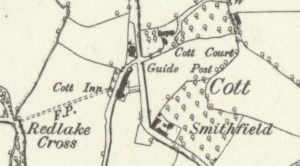
The family motto was “Fortis et Fides” – Strong & Faith. Gt Aunt Adelaide suggests it should be Fortis et Fidelis meaning Strong & Faithful or Steadfast in Faith. Down the generations, according to Aunt Anna, most of the Baker sons were named Richard or John. The first Baker we know of is John who married Mary Beer of Dittisham, Devon on 9th January 1781 (&/or Mary Blacklin). They had at least two sons born in Dartington: Richard on 26th May 1782 and John on 23rd June 1785. John (jr) was Fausset Baker’s Grandfather and Richard, his Great Uncle. The boys were young when their father died in 1798. One wonders if they were called up to fight in the Napoleonic Wars? Or were they charged with maintaining the family farm? For whatever reason, however, in their late twenties , they sold the farm in 1811 and set off for Ireland.
The Baker brothers established themselves in the textile trade in Dublin; maybe this was because they had been sheep farmers in Devon? In Wilson’s 1820 Directory, Richard and John (R&J) are described as Merchant Tailors at 11 Dawson Street; there is also a John Baker, a Woolen (sic) Draper, not far away at 3 Parliament Street. Whether or not they had friends or relatives living in Ireland is not recorded but, within three years, the brothers had married two Morrisson sisters: Mary (m. Richard) & Margaret (m. John). There was a double wedding at St Anne’s Church on Dawson Street on 24th June 1814. (see Morrisson below)
In 1833 Richard became High Sheriff of Dublin and received a knighthood from Marquess Wellesley, who was Lord Lieutenant of Ireland at the time (and brother of the Duke of Wellington). This would have been whilst Earl Grey was Prime Minister (1830-34). Aunt Anna implies that Richard was knighted by Queen Victoria around this time. The Queen, however, did not visit Ireland as Sovereign until August 1849 (at the height of the Great Famine). No doubt Richard and his wife would have been in attendance during her stay in Dublin.
According to a hand-me-down tree, Richard and Mary had ‘sons who died young’ and one daughter, also called Mary. She is described as an excellent singer but remained unmarried. Her Morrisson grandmother died in 1835 and so Mary acted as Lady Mayoress to her widowed grandfather. In 1838 Richard became an Alderman. He was living at Mount Errol, Donnybrook when he died in 1853, aged 72. His shop is listed in Thom’s Almanac in 1862 as Moir & Ritchie with Lady Baker in charge. Aunt Anna described the shop as ‘still flourishing’ in 1934. Sir Richard’s details are recorded in The Illustrated London News (June 18th 1853 Issue 628 Vol 2) and also in a Peerage Notation.
The YouWho Irish website provides evidence that his ‘young’ sons were Richard (1820-1850) and Edmund (1828-1854). It also suggests that Richard (Sr) married Mary Smith (1797-1867) in 1832. If so, this was a second marriage, given that Richard would have been 52 and his sons were born in the previous decade.
Meanwhile, John (Jr) had married Margaret Morrisson. He was a Warden of the Guild of Tailors. In 1840, he purchased Morrissons Hotel from Robert Morrisson. For many years this was the ‘top hotel’ in Dublin, on the corner of Nassau Street and 1 Dawson Street – not far from the tailor shops. We do not know much about John except through his probate. He died on 8th June 1861 and left ‘under’ £14,000. His widow was the Executor and their address was 98 Lower Mount Street, near Dublin’s Merrion Square. They had four children: (Dr) John (Fausset’s father) and Adelaide (Ada) plus two other daughters.
Dr John Baker:
John Andrew Baker was born in Clontarf in c1820. He was the only son of John & Margaret Baker. Nothing is known of his youth but he studied medicine at Trinity College Dublin (TCD). According to a Licentiate Roll, he was living at 1 Dawson Street in July 1847. Morrisons hotel was very close to TCD and this suggests that he had lodgings at Morrisons when his father was the proprietor.
Thanks to information provided by the archive department of the Royal College of Surgeons of Ireland -John passed his LRCSI in 1847 and became a Fellow of the RCSI in 1853. Besides TCD, he trained at Middlesex Hospital in London. He was also, a member of Obstetrics and Pathology Societies in Dublin and the Odontological Society in London (Medical Directory 1865).
On 27th September 1851, he married Caroline Paré of Castle Avenue, Clontarf. They moved into 4 Clare Street, close to Dublin’s Merrion Square and had 4 children: Arthur, Fausset and twin girls – Caroline (Cissie) and another daughter who died three days after birth. Tragically, their mother, Caroline, died a week later, just before Christmas 1854. She is buried at the Jerome Cemetery (with Fausset).
Four years later, on 5th July 1860, John married Jane Affleck MaCarthy (1826-1885) of 63 Wellington Road. The marriage took place at St Anne’s Church, Dawson Street. Jane had 4 sisters and a brother called Jeremiah.
in June 1866, John was elected to the Royal Irish Academy. According to Wikipedia, the RIA is Ireland’s premier learned society, an academic body that promotes study in the sciences, humanities and social sciences. It was founded in 1785; in 1852 the Academy moved to its current Dublin home at 19 Dawson Street, close to Morrison’s Hotel, the merchant tailor’s shop and St Anne’s Church.
Dr John was also a prominent Freemason. The Archivist at the Grand Lodge of Freemasons of Ireland has established that he joined Lodge No 143 in Dublin in 1857.
A Masonic Hall Company was set up in the 1860s to raise funds to build a masonic hall by selling shares to members. Work began in 1866. John was appointed to the Board of Directors in February 1869 and, in the following July, the first masonic meeting was held at, what became known as, Freemasons’ Hall. By the early 1870s, John was the Grand Treasurer for the Great Priory of Ireland.
A large stained-glass window, in the Hall’s Preceptory Room, was replaced in 1873 in honour of a visit by the Prince of Wales. It depicts the heraldry of the most senior officers of the Great Priory since 1869. John’s coat of arms features in the bottom centre panel. It corresponds to a pencil sketch that Aunt Anna sent to Silvia’s brother. The crest shows a wyvern, similar to a family signet stamp. The greyhound in the middle section is believed to derive from the paternal forebears of John’s first wife. The wording at the base is: John Andrew Baker KCT (Knight Commander of the Temple). This is an honorary title granted by the Great Prior in recognition of a Freemason’s contribution and commitment to the Order. The Duke of Leinster (Augustus Frederick Fitzgerald) had been the Grand Prior for several decades but died in 1874.
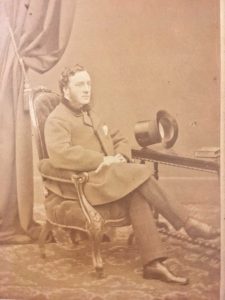
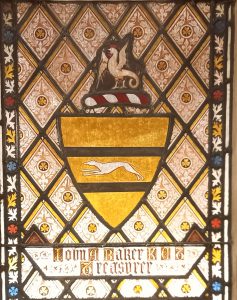
By the 1880 edition of Thom’s Directory, John was described as a surgeon-dentist at Dr Steevens’s hospital. In December 1895, Jeremiah (a surgeon and John’s brother-in-law through his second wife) married John’s first wife’s daughter, Cissie, at St Giles in the Fields, London WC2. On the marriage certificate, her father (now deceased) was described as a Dentist.
John died of cardiac failure on 30th May 1890 at 4 Clare St aged 69 (hence he was born approx. 1820-21). At the time of his death, he was a ‘31st degree Freemason’. His probate amounted to £1,086. Jane had died of dropsy in 1885. There is a memorial for both of them at the Jerome Cemetery:
In Loving Memory, Jane Affleck Baker, 3rd February 1885
And John Andrew Baker, Died May 30th 1890
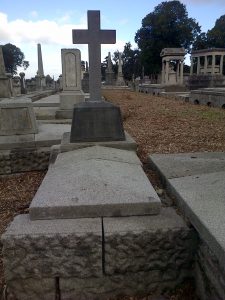
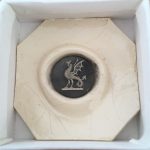
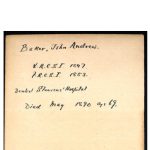
Kate, Mary & Adelaide Baker:
John had three sisters. Nothing, however, was known about two of them until their names turned up on the YouWho website as Kate & Mary. There is no mention, however, of John’s younger sister, Adelaide (1830-1909). She married Francis Webb Sheild*, an engineer. They had two sons, Wentworth Francis (1867-1944) who became a Bishop and Francis Ernest OBE (1869-1959) who was a Civil Engineer. Like the two Morrisson girls who married the Baker brothers, the two Sheild brothers married Boyd-Carpenter sisters – Annie & Mary (Molly).
*Sometimes Shield or Shields. There are two signed paintings by their grandson who spells it Sheild.
2 MORRISSON
Note: Morrisson is spelt with a double ‘s’ but is more often reduced to a single ‘s’ in the latter half of the 19thC.
Arthur Morrisson was born in c.1765. Aunt Anna writes that he came to Ireland from Scotland and was interested in literature, especially the writings of Sir Walter Scott. Arthur married a widow called Catherine Jackson in January 1786 (tbc). Tradition has it that she was a ‘close relative’ of Maria Edgeworth, a famous novelist of the day. This would tie in with Arthur’s literary interests. There is a baptismal entry for a Catherine Edgeworth in Dublin in 1755 (making her ten years older than Arthur). Maria and Catherine were most likely to have been cousins, rather than siblings or half siblings, as Maria’s father was only ten or eleven years older than Catherine.
There is no record of Catherine’s first marriage; nor is there any mention of children but she and Arthur had four young: Robert (b.1788 or 1802), Catherine (1790-1860), along with Mary & Margaret. The latter two married the Baker brothers at a double wedding in St Anne’s Church, Dawson Street on 24th June 1814 (see Baker above).
Arthur was a well-known hotelier. He ran a mail coach tavern in Dawson Street before taking over a hotel in Frederick Street. Then in 1817 he took out a lease on 1 Dawson Street (on the corner of Nassau Street) and opened a hotel, called the Leinster Tavern & Hotel. It was known locally as Morrisson’s and, when Robert Morrisson took over in 1840, Morrissons became the hotel’s official name. Many festive occasions were celebrated in its ‘long room on the first floor’ and it was used by a variety of Charities, Clubs & Societies. In 1858 Charles Dickens stayed there and Charles Stewart Parnell MP was a regular visitor. In 1879, Parnell was elected President of the Irish National Land League and, when in Dublin, he would work from the hotel. In October 1881, however, following a recent Coercion Act, Parnell was arrested at the hotel for inciting tenants not to pay rent. He was subsequently imprisoned for six months. The original hotel building was pulled down in the early 1900s, to make way for an insurance company, and is now known as Morrison Chambers (with one ‘s’).
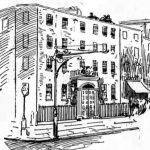
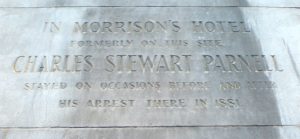
Arthur was very active in public life – notably in Donnybrook where he lived. He oversaw several developments in the area, including new roads, and helped enable the construction of Anglesea Bridge over the River Dodder in 1832. He was also instrumental in the foundation of a local hospital and an Asylum. Around 1808, he entered local government and served on the Grand Jury for the County & City of Dublin from 1823. The following year he was elected as one of two Sheriffs for Dublin (Saunders, 1st May 1824) and, subsequently, was a Sheriff ‘Peer’ until elected Alderman in 1829. He became the Lord Mayor of Dublin in 1835-6. Sadly, his wife died just before his Mayoralty began; instead, his granddaughter, Mary Baker (1826-1910) acted as Lady Mayoress (see Baker above).
There is an article in The Spectator (25th Feb 1832) about the then Lord Mayor of Dublin – along with Mr Alderman Morrisson, a Mr Butler, some Irish Peers and half a dozen Commoners. It reports that they paid a visit to St James’s Palace to protest about the imminent changes affecting the representation of the Irish People. The entourage walked from Regent Street in an ‘orderly procession’ and presented their anti-reform Corporation Address to William IV; it was read to the King by the Recorder. Not surprisingly, their appeal was firmly rejected and squashed ‘in a tone which will be audible from the Giant’s Causeway to Cape Clear’. This episode gives some indication of Morrisson’s political stance. The Irish Reform Act duly passed into law in August 1832.
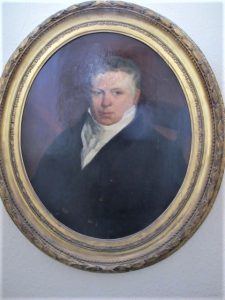
Whilst Lord Mayor, a couple of satirical prints were published in 1836. In one, Morrisson is being stabbed (Death of Caesar) and, in the other, mocked (Turning the Tables). The prints are held in the National Portrait Gallery (NPG) in London. The impetus behind these cartoons remains a mystery but they might have something to do with the Irish Municipal Corporations Bill; this was debated over several years, including at Westminster in February 1836. Online, it is possible to click on the surrounding faces, revealing members of the elite ruling class who represent a variety of political persuasions. Initially, the sketches were signed ‘HB’ and remained anonymous. Later the artist became known as John Doyle (1797-1868). He was born in Dublin but moved to London in 1822. In all, he produced nearly 700 prints, many of which now reside in the NPG as they are ‘true representations, a record of the age’.
Arthur died in 1837 at Belville Lodge, Donnybrook, Dublin (not far from his son-in-law, Richard Baker). His nephew (?), Robert, was sole executor of the Will. Arthur was buried at Mount Jerome Cemetery which had opened during his mayoralty in January 1936. Initially, his wife was buried at Donnybrook but, subsequently, was re-interred at Mount Jerome alongside her husband.
Their (faded) plaque reads:
Here rest Catherine the beloved wife of Alderman Arthur Morrisson of Dawson Street the City of Dublin with whom she lived in perfect harmony as a wife, mother, friend and Christian. Her conduct was exemplary and her piety sincere. She died April 11th 1835 aged 80 years. Also the remains of her beloved husband Alderman Arthur Morrisson who departed this life 5th Oct. 1837 aged 72 years.
A sizeable obelisk was erected in Arthur’s memory, near to Anglesea Bridge. An article by Danny Parkinson describes the inscription as extoling the virtues of Arthur who was a ‘sincere friend, charitable kind generous, as a Christian and citizen there were few to equal non to surpass him’. The obelisk also features on the Donnybrook Walking Trail.

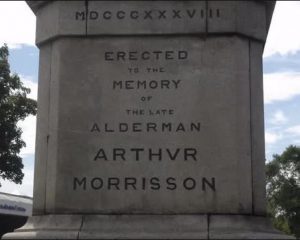
A pencil sketch of the Morrisson coat of arms also survives, as does a book-plate. Awareness of ‘Black Lives Matter’ and slavery accountability means that, today, it is awkward to find the arms are dominated by three black heads. Some initial searches explain, however, that (as is usual) they stem from an early version of the surname – Mauritius/Maurus (meaning, variously, North African, Moorish, dark); later the name translated as Maurice, Mauritz, Moritz and in Gt Britain as Morris. Morrisson signifies the son of Morris.
In the Middle Ages, Blackamoor or ‘black moor’ were English terms used to describe black people along with their cultural artefacts. In heraldry, a blackamoor can be the ‘charge’. The head of a Moor is blazoned as a ‘maure’ or ‘moor’s head’. The design features on many heraldic shields including the Sardinian flag where four moor heads are depicted with bandanas.
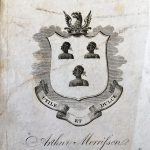
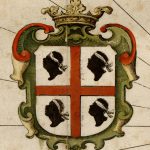
Sources:
Parkinson Article – https://www.jstor.org/stable/30101089
Donnybrook Walking Trail –
https://donnybrooktidytowns.ie/wp-content/uploads/2021/02/DonnybrookWalkingTrail.pdf
YouWho website –
https://www.youwho.ie/morrisson.html
Richard Baker – in Peers, Baronets, Knights by Charles R Dod (aka Dodd) 1844
3 PARÉ
Caroline Paré (b 1827) was Fausset Baker’s mother and Silvia’s grandmother. She married Dr John Baker in Clontarf, Dublin in 1851 but, tragically, died in childbirth in December 1854. We know little about her but can piece together an interesting Huguenot heritage which came through her father, William (1805-1873). She had a brother, John Clement (1827-1910) who married Adelaide Luscombe in Clontarf, Dublin, and a sister, Emma (1829-1897) who married Thomas Dixon Galpin of publishing fame. Their mother, Ann Oakes (1801-1886), came from Market Drayton, Shropshire.
Caroline’s parents married in 1827 in Harborne and lived in Birmingham. Initially apprenticed to his father, William established a tobacco business in New Street; in today’s terms this belittles his talents and ability. Interested in politics from an early age, he was the first civil Registrar in Birmingham in 1837 and elected to Birmingham’s first town council in 1838. He was a founder member of the original Birmingham Cooperative Society. He lectured and published extensively on the cooperative movement and parliamentary reform. His socialist ideals, inevitably, were often at odds with those of a more traditional nature, notably the Bishop of Exeter who complained about him in the House of Lords.
William became a close follower and friend of Robert Owen. Documents suggest he visited Owen’s utopian model community in Indiana (USA). If so, it would have been an arduous journey, probably before he married. The Community was established in 1824, on a site previously run by a German sect known as the Harmonists who named the area ‘New Harmony’. Owen’s community, however, was short- lived owing to financial and management challenges. Although dissolved in 1829, its example led to changes in education practices right across America, as well as to the rights of workers & women. The small town continued to attract academics and free thinkers and is now a tourist attraction.
Following on from the Indiana ‘experiment’, Owen rented some land in Hampshire (UK) and built ‘Harmony Hall’ intended as a ‘socialist project in community living’. In 1842, William became the ‘acting governor of Queenwood’ but in 1844 – before the ‘communitarian pioneers’ became bankrupt (1845) – William moved to London. Here he is described as a railway statistician. Evidently, he prepared reports for presentation to parliament about some of the principal rail lines projected in England and around the world.
In 1846, William moved to Dublin to become the managing partner of an ironworks based in Seville Place, subsequently known as the Irish Engineering Company. It worked in partnership with an engineering firm in Liverpool, specialising in the construction of railway plant for the UK and further afield. This included a tubular iron bridge, over the River Wye at Chepstow, under the supervision of Isambard Brunel; also, a safety railway wheel (patented by fellow partners, Finch & Willey) which was exhibited at the Great Exhibition of 1851 (Class VII, no 150).
The Dublin foundry was said to be the largest in Ireland. During the 1850s the Company expanded their range of products and, in 1858, William was awarded Patent 1054 for the invention of ‘improvements in the manufacture of metallic and other bedsteads, and other articles of furniture’. The following year the Company advertised their Iron Castings as having facilities for ‘executing orders with rapidity and economy, thus enabling them to offer advantages to Builders and others not to be obtained elsewhere’.
Following Owen’s death in 1858, William became his literary executor. He was also instrumental in convening the National Cooperative Congress in 1869 and became the first general secretary of its central board. Then, in 1871, as President of the Owen Centenary meeting, he delivered an address on Owen’s life. By this time, he was suffering from ill health himself and, within a couple of years, died at his son’s house in Croydon.
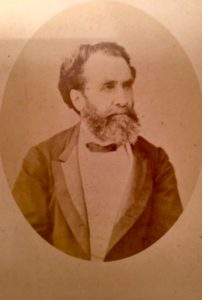
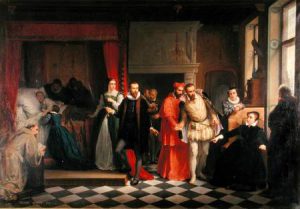
William’s Huguenot link, potentially, extends back to the turn of the 15th/16thC. This is because of a tradition (and some evidence) that the Paré’s were descended from Ambroise Paré, the ‘father of modern surgery’. Ambroise (1510-1590) began life as a barbier-chirugien which, at that time, was a ‘jack’ of all trades involving basic tools – eg for cutting hair, pulling teeth, amputating limbs. He was born near Laval (Mayenne) and served no less than four Kings of France. He lived through the French Wars of Religion (1562-1598) treating the wounded on and off the battlefields. Although a Catholic, Ambroise supported the Huguenot cause and features in the ‘wall of fame’ at the Library of the History of French Protestantism in Paris. He was married twice but only two daughters survived to adulthood. This suggests the Paré surname most likely – if at all – came through his eldest brother, Jean, also a Barber-Surgeon.
Following the revocation of the Edict of Nantes in 1685, John Paré arrived in Plymouth as a Huguenot refugee. He came with 4 children – Peter, John, Marie and Susanna. Records state that they received money from the Royal Bounty in 1687. The family were granted denization and naturalisation in the same year but, sadly, it was also the year in which John died. No mention of a wife/mother is made.
There was already a sizeable community of Huguenots in Plymouth and Stonehouse. A large number of the refugees came from La Rochelle and were connected to the fishing or shipping trade. Others were skilled merchants and entrepreneurs. They had fled on account of religious persecution and thus, for support and friendship, they were naturally drawn to French speaking Churches on English territory.
By the 1680s, there were several French Churches in the Plymouth area. These would have been non-conformist with independent congregations and elected elders. Then there were conformist Churches which adhered to the Church of England and its hierarchy of bishops but using French translations of the English liturgy. Over time, some of the latter morphed into regular C of E places of worship. This would have been advantageous for Huguenots who wished to develop business links with local community leaders. Another advantage related to marriage. This was because – following the Hardwick Marriage Act – in the eyes of the Law, marriages were only recognised when conducted in C of E Churches (from 1754-1837). To hedge their bets, some Huguenots were married twice – first, in their regular non-conformist Church and secondly in the nearest C of E church.
The names of Peter & John Paré can be traced several times over through some 18thC Registers (in particular at St Andrews Church, Plymouth) but a direct line between the first John Paré who escaped to Plymouth and John Paré, born approx. 1774, is a matter of conjecture; as is the lineage back to Ambroise. The latter John was born in Plymouth and married near Birmingham in 1798. According to an 1818 trade directory he was a cabinet maker & upholsterer – both strong Huguenot skills – in Colmore Row, Birmingham. His wife was called Ann (surname unclear). They had two sons – William Taylor Paré (b 1805) and John (b 1808) – and two daughters who died young, as well as being the grandparents of Caroline Paré, whose short life began this account.
Sources (to be finalised)
Huguenot Society Journals and Quarto Series (HSQS 8, 20,51, 60)
Wagner list of 900 Huguenot families
Devon Association, Articles
Huguenot Heritage by Robin Gwynn (Sussex Academic Press, 2001 2nd Ed)
Trumble blog
Memorial Address at Dr AWW Baker’s funeral and his wife, Anna Baker’s, Correspondence
and a missing Bible with the Paré family tree demonstrating the link back to Ambroise
Dictionary of National Biography; Dictionary of Irish Biography
Grace’s Guide to British Industrial History
Queenwood College – wikipedia
Memories of the prairie.com – robert owens innovative new harmony
4 OAKES – details to follow in due course
